
click image to zoom
Honey bees have been extensively studied in their biology, ecology, anatomy, morphology, physiology, behavior and general beekeeping, and there is a vast literature on each of these aspects. However, the issues concerning honey bees in their condition as farm animals have not been deal with rigorous zootechnical criteria. This book presents methods, models and systems related to how to gather,…
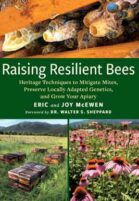
click image to zoom
Raising Resilient Bees offers a natural, sustainable, and replicable model for hive health and prodution, making it the comprehensive source for new and experienced beekeepers. Increasing pest and disease pressure presents an unprecedented challenge for the modem honey bee. Hobby and commercial beekeepers alike continue to experience troubling rates of mortality for their colonies, with deleterious consequences for the stability…
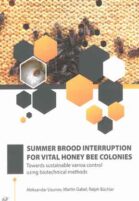
click image to zoom
Aleksander Uzunov
Martin Gabel
Ralph Büchler
The parasitic varroa mite remains the most serious problem for honey bee colonies worldwide. Despite various chemical treatments, many beekeepers still lose their colonies each year. This book sets out the authors' novel vision and practical steps on to how to manage bees for varroa control using a "nature based beekeeping" approach. With clear step-by-step charts on what to do…

click image to zoom
"Richly illustrated with the author’s photographs, there’s a first-hand commentary on what to look for and when just to trust the nurse bees to know their job. Highly recommended for any beekeeper, even with modest experience, who wishes to improve their stock." Geoff Hardman (Editor, Gwenyn Kernow magazine, CBKA) Say “queen rearing” to most beekeepers, and they will probably run…
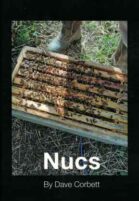
click image to zoom
All you need to know about nuclei colonies and their value. Dave Corbett lives in Bedfordshire, keeping bees with the assistance of his father, John. Dave began beekeeping in 2014, with a single hive in his back garden. From these small beginnings he has managed to expand his beekeeping operations to around 150 colonies, becoming a member of the Bee…
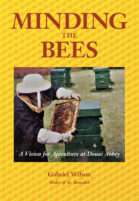
click image to zoom
All beekeepers will be aware of the important work carried out in the last century by Brother Adam and his helpers at the Benedictine monastery of Buckfast Abbey. Less is known, however, of beekeeping since 1933 at Buckfast's sister Benedictine monastery of Douai Abbey where an interest in the craft continues under the present beekeeper and monk, Dom Gabriel Wilson.…
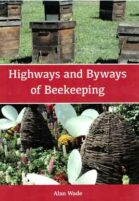
click image to zoom
Alan Wade is a research scientist and has kept bees for well over forty years. In Highways and Byways of Beekeeping he ventures down some of the many. back roads beekeepers have taken. He explores the limits of our knowledge and understanding of honey bees while introducing us to some of the lost arts of beekeeping practice. Highways and Byways…
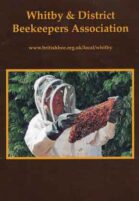
click image to zoom
Foreword by Sheila Rawson There can be no doubt in any beekeeper's mind of the complete commitment of John Dews to the conservation of Apis mellifera mellifera. He has devoted over 60 years to beekeeping and there can be little he does not know about bees through his assiduous observations of bee behaviour, bee breeding and his research into varroa…
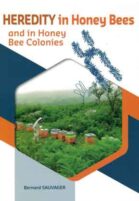
click image to zoom
A drone dies after mating. Nonetheless, his sperm will later transmit 100% of his genes to each of his daughters. A queen, on the other hand, because her egg is produced by cell division, will only transmit 50% of her genes to each of her offspring. To add to the complexity of honey bee genetics, a queen will mate with…
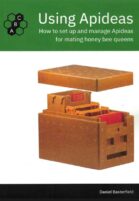
click image to zoom
Queen raising is one of the most rewarding aspects of beekeeping, allowing beekeepers to propagate the desirable characteristics of their best colonies throughout their apiaries. Father and son commercial beekeepers Ken and Dan Basterfield, both holders of the National Diploma in Beekeeping, have been using Apideas to raise their own queens for forty years. Here they present the tips and…

click image to zoom
This is an abbreviated record of the work necessary to establish a large honey farm in the North of England written by the owner of that business. It is also a record of many of the successes and difficulties encountered during a period of 75 years when for 50 of those years the family were entirely dependent on honey bees…
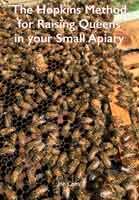
click image to zoom
Raise your own Queens and improve your stock. The Hopkins method requires no purchasing of queen rearing materials or kits, nor learning curve and skills required of grafting. Beekeeping presents many challenges, and one of the most troublesome is finding colonies with no queens.There are queen suppliers who are more than willing to sell you some queens, but the prices of…
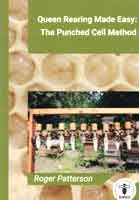
click image to zoom
Raising queens using the Punched Cell method has been in use since the early 20th century. Until now, the booklet "Raise Your Own Queens by the Punched Cell Method" by Richard Smailes, that was first published in 1970, was the most comprehensive source of information. Possibly due to the irregular supply of punches, few have continued to practice the method…
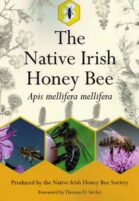
click image to zoom
A collaborative work with contribution from expert beekeepers and scientists throughout Ireland. It contains everything you need to know about the Native Irish Honey Bee - from evolution to genetics and into the future with conservation, and 'how to' sections from commercial beekeepers. Includes a practical section with step by step instructions on queen rearing and bee-breeding techniques. Most beekeeping…
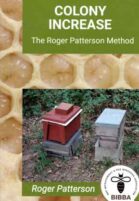
click image to zoom
This book includes several methods of colony increase that can be used individually or in one complete method as described. All elements, although they may not be part of mainstream teaching, have been consistently successful for the author for well over 40 years, using standard equipment. The "Roger Patterson Method", if used as described, can produce a tenfold increase in…
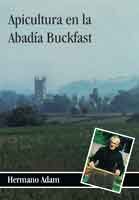
click image to zoom
Hasta ahora desconocido al público español, este libro está considerado desde muchos años un clásico de la literatura apícola. Aquí Hermano Adam habla en primera persona de sus experiencias como apicultor pionero sobre la cría y selección de reinas, además del manejo de sus colmenas como ejemplo de una apicultura moderna. Esta lectura, fácil, fluida y al mismo tiempo entusiasmaste,…
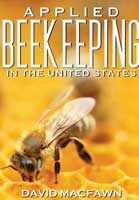
click image to zoom
The beginner as well as the experienced professional will garner a hive full of information from Applied Beekeeping in the United States. Honeybee information has been compiled and published in book form in hopes that beekeepers in the United States and worldwide will benefit. There are many topics in this book not contained in more theoretical books and through 342…
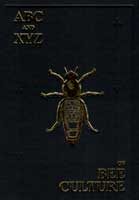
click image to zoom
Keith S. Delaplane
James E. Tew
Jennifer Berry
Clarence H. Collison
Ann Harman
Kim Flottum
• 42nd Edition (2020) • Over 800 pages packed with information • Hundreds of Color photos and illustrations • More than 50 Contributors • A MUST for every beekeeper large and small • A mix of reference, the how and why things are done and a history of how beekeeping got where it is today! In 1877 A. I. Root…
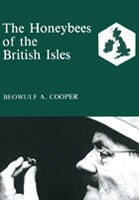
click image to zoom
A most important book on breeding, mating behaviour, selection and all aspects of the native British bee by a GIANT of beekeeping. This classic title, long out of print, has now been reissued by the Bee Improvement and Bee Breeders Association. Beowulf Cooper was one of the founding members of The Bee Improvement & Bee Breeders' Association (BIBBA) and responsible for…
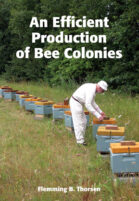
click image to zoom
An Efficient Production of Bee Colonies is written by Flemming B. Thorsen, a commercial bee-keeper who concentrates on breeding pure Danish Buckfast bees. There are no pure English Buckfast bees in Denmark anymore, but he continues to use the methods of Brother Adam from Buckfast Abbey in England. Flemming is a commercial queen breeder and produces many new colonies every…
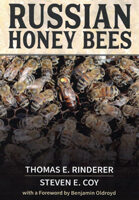
click image to zoom
Thomas E. Rinderer
Steven E. Coy
Russian Honey Bees are a stock of honey bees that were bred to be resistant to Varroa mites and have good beekeeping functionality for both honey production and pollination. This book describes the project to produce the Russian honey bee stock, conducted over 20 years of work by the combined efforts of scientists and beekeepers. Practical information on the management…
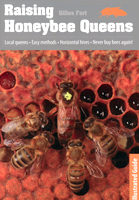
click image to zoom
Raise your own superior queens and you’ll never need to buy bees again! This fully illustrated guide makes self-sufficient beekeeping accessible to everyone: • Detailed, easy to understand practical advice. • Simple, time-tested techniques. • All hive models: vertical and horizontal. • Many methods to choose from. • Every step clearly explained. • Successful breeding, mating, and queen introduction. •…
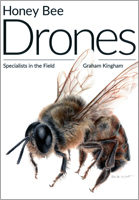
click image to zoom
This book concentrates only on the drone - the male honey bee. It provides details regarding the drone's internal and external anatomy, production and development, behaviour, role in the hive, genetics and more. Copiously illustrated, the book also discusses the latest research updates on drones. Graham Kingham is a retired mechanical quality engineer who keeps a few hives in Devon.…
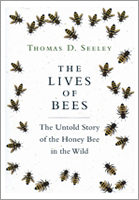
click image to zoom
The Latest important book from a world leading scientist! (Hardback, 432 pages) Humans have kept honey bees in hives for millennia, yet only in recent decades have biologists begun to investigate how these industrious insects live in the wild. The Live of Bees is Thomas Seeley's captivating story of what scientists are learning about the behaviour, social life, and survival…
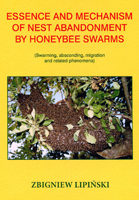
click image to zoom
This hardback book is a new updated edition of the work which was awarded a Gold Medal at the XXXVII Apimondia Congress, Durban 2001. It reviews in great detail the factors responsible for swarming, nest abandonment and related phenomena. This volume is very well researched and listed in its 312 pages over 50 pages of references. Not really suitable for the…
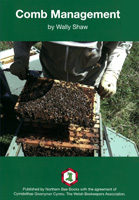
click image to zoom
In a sense the combs in a honey bee nest are an extension of the bees that made them and it is really the bees and combs together that constitute the colony. In fact, the average honey bee worker spends 95% of her life on the combs in the hive. The combs are built to be multi-purpose in the sense…
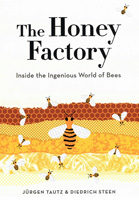
click image to zoom
Jürgen Tautz
Diedrich Steen
Beehives might look like seething anarchy at first glance, but bees know exactly what they are doing. The universe of the beehive is an intricately organised, delicately balanced ecosystem. From the queen to the lowliest worker bees, each bee plays its part in the whole. The Honey Factory plunges the reader into the invisible life of a bee colony and…
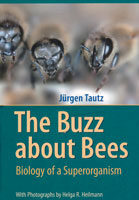
click image to zoom
With spectacularly beautiful colour photographs and an easily understandable text The Buzz about Bees tells the story of honeybees in a new perspective. Based on the latest data, notably from his own research group, Jürgen Tautz provides a wonderful insight into the realms of bees. “Whereas bee colonies were once seen as perfect societies of selfless workers and drones ruled…
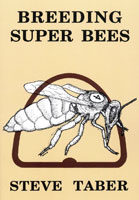
click image to zoom
Steve Taber spent a life time with bees - both in his native America and in Europe. It is not wrong to say that he forgot more about breeding than most people ever knew - and even then he knew more!! John Phipps the Editor of The Beekeepers Quarterly said that "If Steve said something you could always reckon on…
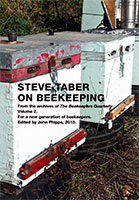
click image to zoom
This collection of articles from The Beekeepers Quarterly, over a period of ten years, gather together the words of wisdom by a Great American Beekeeper. There is much that can be learnt from this reading this volume that will improve all beekeeping practice. Researcher, commercial beekeeper and finally bee geneticists - with experience in both America and Europe it was…
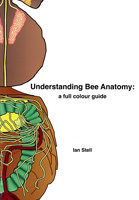
click image to zoom
Understanding Bee Anatomy aims to do two things, to explain the structure of this fascinating insect and, through stunning images, to reveal the intricate detail. Dr Stell has applied his knowledge of the human body in describing the honeybee, system by system. The book starts with a chapter on the developmental stages, showing the internal changes taking place from the…
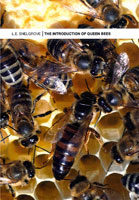
click image to zoom
We think that this is the most important book written by that Somerset Master of beekeeping. It reviews all the methods and is an essential manual for the keenest beekeeper.
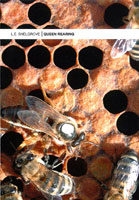
click image to zoom
A facsimile edition of the 3rd 1966 printing. Of use to all who consider this aspect of the craft.
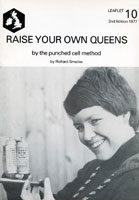
click image to zoom
This booklet leads one through the process of queen production by the punched cell method.
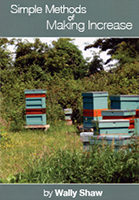
click image to zoom
This booklet originally published by the Welsh Beekeepers Association this title is meant for those with two or three hives who wish to make small increases without influencing the eventual honey crop.

click image to zoom
This book is about the inner workings of one of nature's most complex animal societies: the honey bee colony. It describes and illustrates the results of more than fifteen years of elegant experimental studies conducted by the author. In his investigations, Thomas Seeley suggests the answer to the question of how a colony of bees is organised to gather its…
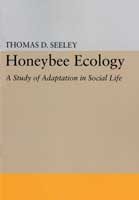
click image to zoom
Originally published in 1985 this book presents honeybees as a model system for investigating advanced social life among insects from an evolutionary perspective.
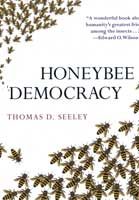
click image to zoom
"Honeybee Democracy is a wonderful book, beautifully written and illustrated, about humanity's greatest friend among the insects. The honeybee is important not only for its role in agriculture but for what it has taught us concerning the fundamental nature of complex social organisation. Seeley, its leading authority, here presents it to a broad readership, with scientific exactitude written in lyrical…
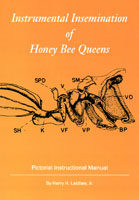
click image to zoom
The classic title for all who are considering this approach.
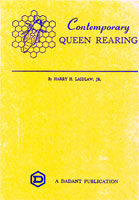
click image to zoom
A classic title written by a master of American beekeeping. A life times experience in Queen Rearing can be found inside these covers.
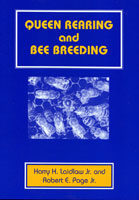
click image to zoom
Harry H. Laidlaw
Robert E. Page
A classic title written by a master of American beekeeping. A life times experience in Queen Rearing can be found inside these covers.
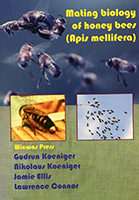
click image to zoom
Gudrun Koeniger
Nikolaus Koeniger
Jamie Ellis
Lawrence J. Connor
"This is the definitive review by authors who have personally carried out much of the primary research on the topic."Norman Carreck, Science Director, International Bee Research Association, University of Sussex, East Sussex, United Kingdom "… an authoritative treatise, built on decades of research of the authors on this subject…Personally, I very much appreciate this book as the authors put in…
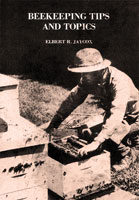
click image to zoom
This is a collection of articles written by Elbert Jaycox for the newsletter Bees & Honey during 1975 - 1981 when he was the beekeeping specialist at the University of Illinois. As you would expect from such an expert it is packed with pearls of wisdom - based on his lifetime experiences or gathered from a wide reading of the…
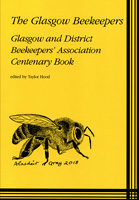
click image to zoom
The centenary publication covering all aspects of the craft.
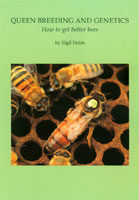
click image to zoom
After successful publication in Denmark (1995 ) and Germany (1997 ) this 2010 English translation deals with all aspects of mating and queen breeding. This is a translation of the second (2009) Danish edition, It is full of the latest information. The sub title - suggests much - and delivers on this promise. In full colour it covers The production…
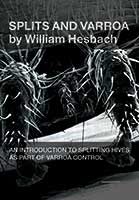
click image to zoom
Bill Hesbach is a beekeeper and honey producer in Cheshire, Ct, where he owns and operates Wind Dance Apiary. Bill studied beekeeping at Rutgers University in NJ and is currently enrolled in the master beekeeping program at the University of Montana. Bill serves on the board of directors for the Backyard Beekeepers Association of Connecticut, where he helps teach new…
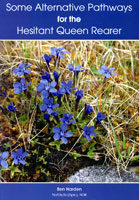
click image to zoom
There are many fine books on Queen Rearing which assume a high degree of skill. This is not one of them. Ben Harden a leading Irish beekeeper, and as far as we know, the only one from Eire to gain the National Diploma in Beekeeping. He reveals in this text the secrets of rearing queens. He covers grafting, queen cell…
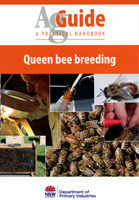
click image to zoom
Elizabeth Frost
Doug Somerville
We have recently taken into stock this Australian title which we consider to be the most up to date publication, (and probable with Woodward – Queen Bee, the best two titles currently available) on all aspects of Queen Bee production & selective breeding for colony improvement.
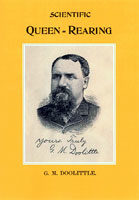
click image to zoom
Scientific Queen Rearing is one of the classic American titles in this area of beekeeping. This facsimile reprint of the 3rd edition of 1901 at 110% scale allows easier reading. There is much advice in this volume, although written over 100 years ago, which is relevant to the Queen rearers of today.
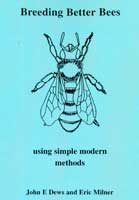
click image to zoom
The rationale behind a bee breeding programme for improvement of honeybee colonies is given together with a detailed description of simplified morphometric techniques which can be used to identify honeybee races or sub species. These techniques also indicate whether the breeder queen bee will breed true.




















































